The luxe island paradise that guests return to again and again
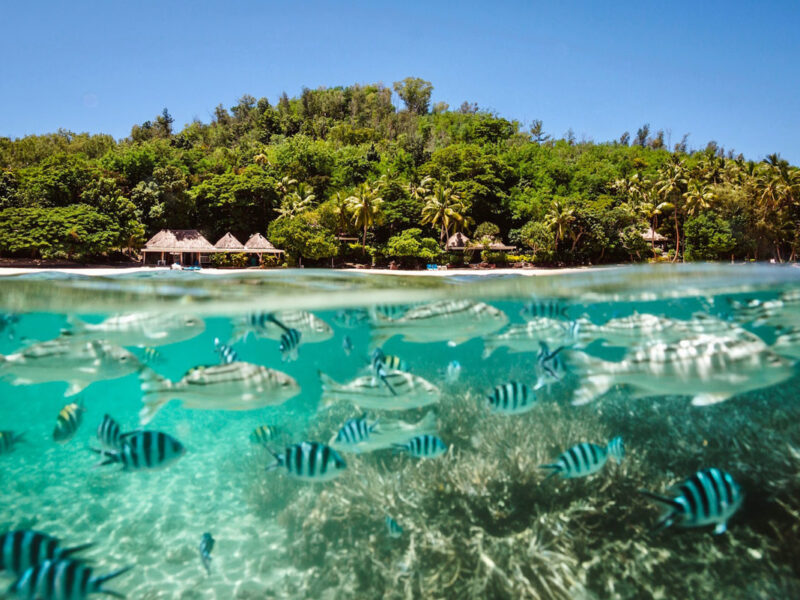
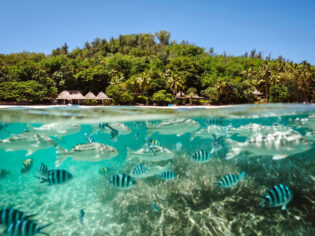
Champagne and lobster on your own private beach might hold a strong allure, but it’s the connections forged on this tropical Fiji paradise that see travellers coming back to Turtle Island time and again.
“We have travelled a lot and we’ve never stayed at another resort like this. That’s why we keep coming back.” Tanya and John, from NSW’s Hunter Valley, are celebrating their 40th wedding anniversary with their fifth visit to Turtle Island. Moments before, they’d been surprised with cake, garlanded with salusalus (necklaces of flowers) and serenaded with song. Now, visibly moved with emotion, they’re sharing a few words about what this luxury Fijian resort means to them.
It’s cocktail hour and guests and staff members are gathered on the sand for this nightly sunset ritual. We’ve just arrived, my partner and I. One quick flight from Sydney and a seaplane transfer over turquoise seas patterned by pale coral later, we’re blinking in our new surrounds: a private island paradise in the secluded Yasawa archipelago, the sun sinking into the South Pacific.
We introduce ourselves, as is the norm for fresh arrivals here on Turtle Island. So, too, do today’s other newcomers, Antonio and Rachel, a couple from Austin, Texas, who had honeymooned here in 2008 and are on to their fourth visit. Those who are departing the next morning are then invited to share their thoughts and reflections. Voices break and tears well. They will be back, they assure their Turtle family – the name given to all those who work on the island and extended to the guests they welcome into their fold. What are the magic ingredients at play here that engender such feeling and devotion? It’s Sunday, and the staff choir gathers on the beach to fill the sweet evening air with music. We get the feeling we are about to find out.
From humble beginnings to family
Turtle Island is the vision of the late Richard Evanson, an American entrepreneur who made his fortune in cable TV. In 1972, burnt out and needing to unplug, he followed his feet to Fiji. Before long, he purchased a 200-hectare uninhabited island called Nanuya Levu, arriving with little more than a generator, refrigerator and tent. The island was barren, having been overrun by wild goats. Richard – along with right-hand man Joe Naisali from neighbouring Matacawalevu Island and a team of local villagers he employed – set upon rejuvenating the land, with more than 500,000 trees planted since those early days.
In 1979, the island was used to shoot The Blue Lagoon, the movie starring Brooke Shields. Buoyed by the experience of hosting its cast and crew, Richard opened the property, by now dubbed Turtle Island, to guests in 1980 and went on to pioneer a model of sustainable tourism in Fiji.
The island is now run by Richard’s son, Richard Evanson Jr, while Sulu Sladen, Joe’s grandson, leads us on daily snorkelling excursions. The resort employs 110 Fijian staff, many of whom are from the seven local villages and many of whom, like Sulu, are second- or third-generation Turtle Islanders. Ebullient activities supervisor Jerry Tokalau has worked here for 19 years and met his wife here. It really is a family affair.
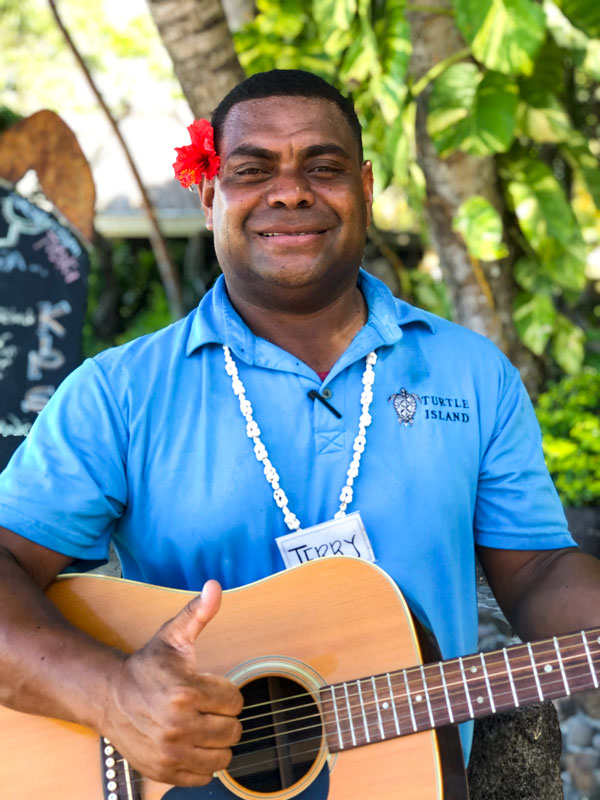
Jerry Tokalau leading the Turtle family in musical numbers is part of everyday life on Turtle Island. (Image: Imogen Eveson)
Warm hospitality flows through to beachfront bures
The Turtle family exudes that Fijian warmth the country is so famous for. Icebreaker questions – “Where are you from?”; “How did you hear about Turtle Island?”; “What do you do?’”– give way to meaningful interactions. Accommodating just 28 guests across 14 bures, staff are on a first-name basis with everyone (regardless of whether or not you’re called Britney or Ringo, two previous visitors). And each guest is assigned their own Bure Mama who acts as a concierge. With a wide smile and an even wider embrace, Tokasa Kenona, or Mama T, is looking after us for the week.

Meet Tokasa, our warm and welcoming Bure Mama. (Image: Imogen Eveson)
Our Deluxe Beachfront Bure is decked out in dark, cooling timbers offset by fresh whites and greens and pops of frangipani reds. The words ‘Bula, Welcome Home’ are spelt out in palm leaves on our four-poster bed, which is handcrafted with island wood and draped in gossamer curtains that ripple gently under a whirring ceiling fan.
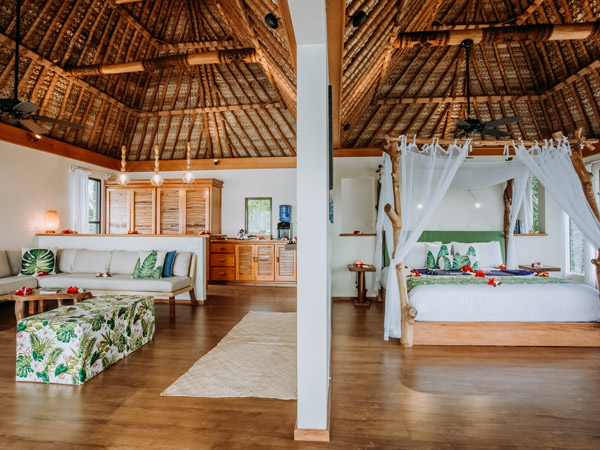
Inside one of the island’s tropical-style bures. (Image: Laura Pittman)
From here we can amble out the door and down to our very own patch of sand to clamber into the hammock or snorkel from the shore, where palm trees cast shadows in the pale aquamarine water.
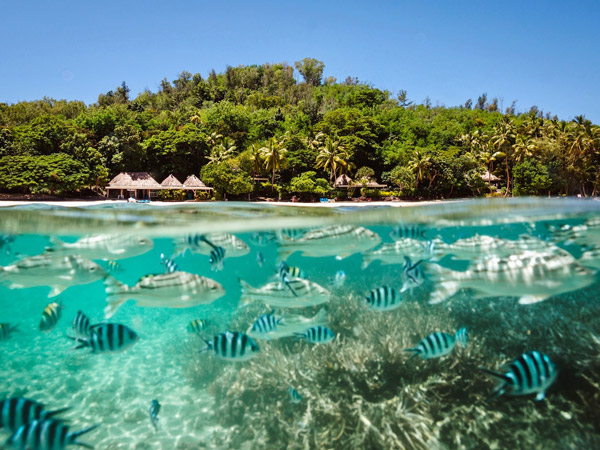
The island is fringed by reef, home to tropical fish.
Each morning, we stroll along the beach past the activities shed – where in the long hours of a lazy afternoon we’ll take out paddleboards and kayaks to drift around the bay – for breakfast on the sand. It’s here that we’ll consult the Bula Board for the day’s activities and learn new Fijian words – such as totoka, which means beautiful.
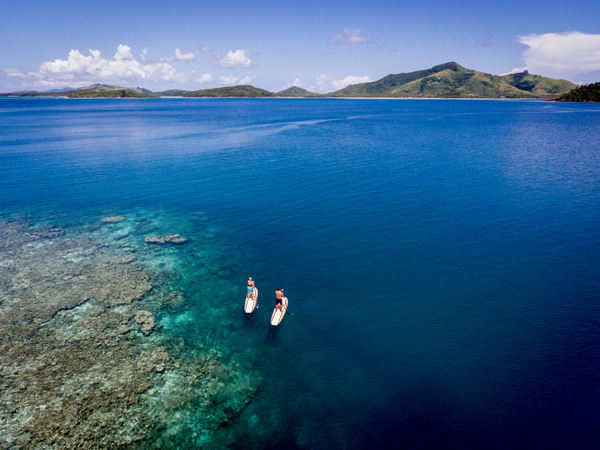
Guests can paddleboard around Turtle Island’s peripheries. (Image: Laura Pittman)
A collection of private beaches to enjoy
One of the big drawcards of Turtle Island is access to its 12 private beaches. Mama T makes sure our picnic is packed with our tipple of choice and drops us off to be castaways for the day. Over the arc of the week, we spend time on Devil’s, Honeymoon and Shell beaches. I do lazy laps between the day bed and the bath-like sea. Read my book. Lie back and let the softest of sea breezes wash over me. Watch the tide roll in and the late afternoon light turn everything golden.
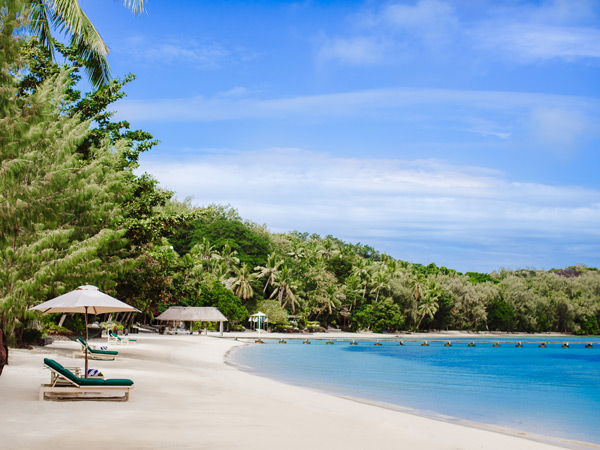
Soak in the action from Turtle Island’s main beach. (Image: Cheer Wedding Photography)
“Where else can you have a private picnic on the beach with lobster and Champagne?” explains Tanya on why she and husband John keep coming back. “But above all, it’s how everyone goes above and beyond to make sure you are happy.”
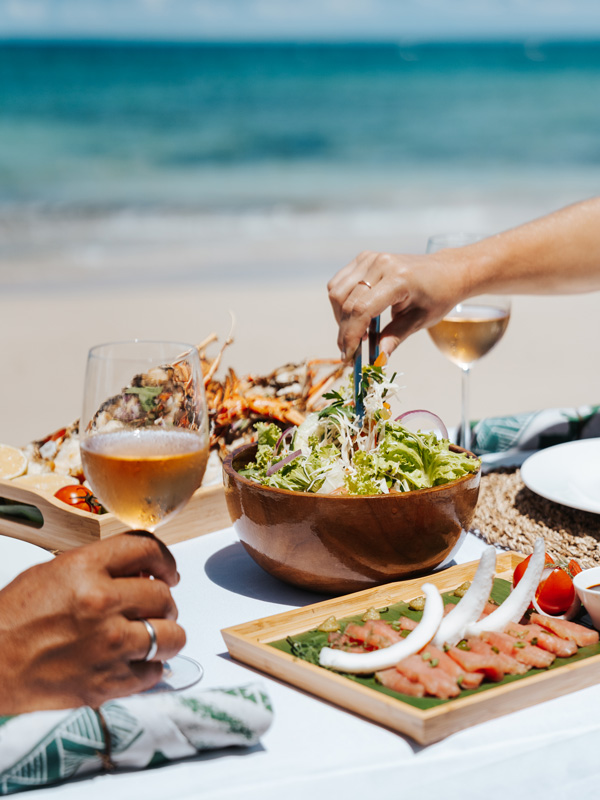
Gourmet picnics on private beaches are also on offer.
When we’re not picnicking on private beaches, we visit Vuaki Village where kids with honey voices have taken time out from their school holidays to perform gospel songs for us. And we sail to Tamusua, where boatman Akuila Davu leads us on a subterranean snorkel through the cave system he grew up exploring.
A culinary affair
Back on Turtle Island, Jerry flexes his culinary clout with a cooking demonstration in which he rustles up an ocean-fresh curry with a few simple ingredients: Spanish mackerel, coconut milk, island salt, chilli and curry powder.
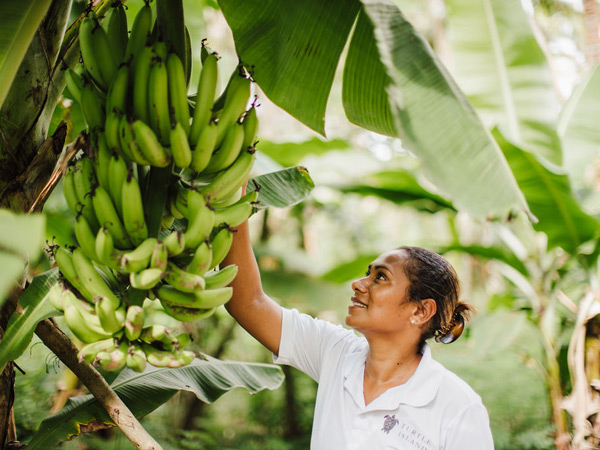
Menus are crafted using island produce where possible.
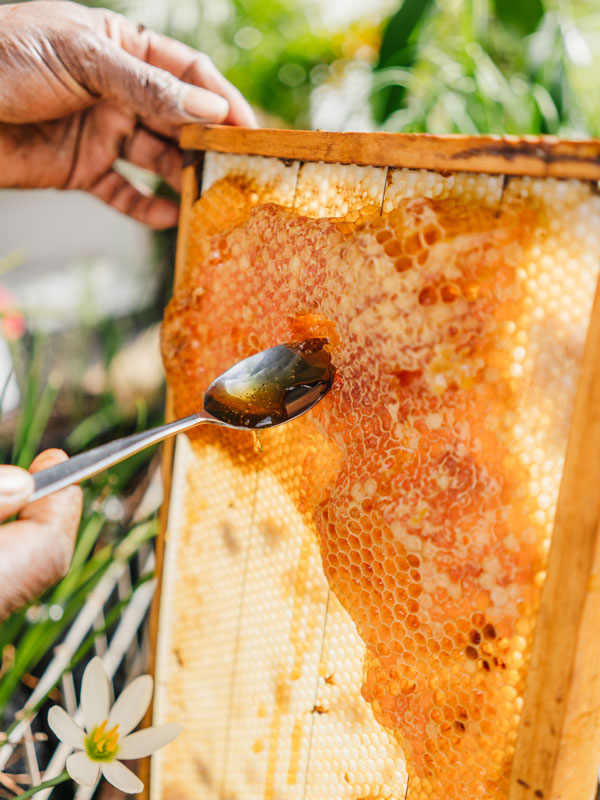
The island produces its own honey.
Menus are local and crafted with island produce where possible. The large kitchen garden sits on what was a mangrove swamp when Richard first arrived; today it groans with lettuce, cucumber, long beans and taro. A fruit garden drips with papaya, watermelon, guava, lime and avocado.
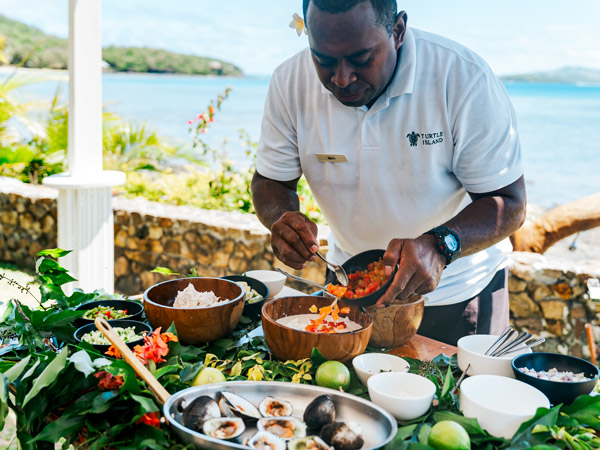
Chef Beni whips up fresh culinary creations.
Dinners are an experience in themselves and range from beachfront meals with fellow guests to private dine-outs. One night my partner and I float out to a pontoon set up for two, the beach a flicker in the distance as we sink into the warm navy silk of a Fijian night.
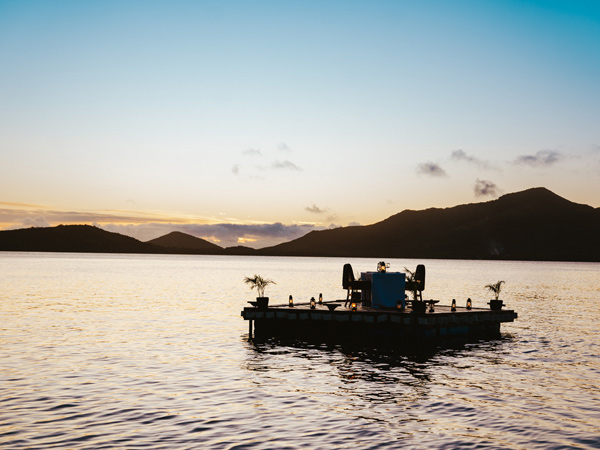
Dinner on a floating pontoon is one of the many options.
On another night we dine high on a clifftop before joining the dancing back at the resort – it’s Family Fun Night. On Wednesday it’s a traditional lovo night (a feast cooked in an underground oven) followed by a social evening in front of a hibachi grill. On our final night, we assemble in the kitchen garden for a long-table dinner lit up with fairy lights.
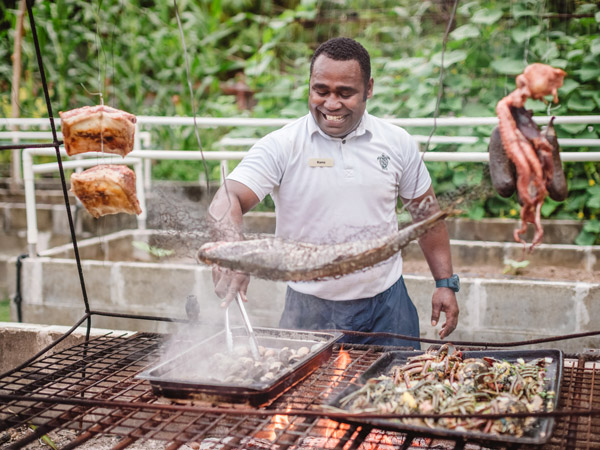
Varied dining experiences include flame-cooked hibachi grill or lovostyle. (Image: Laura Pittman)
Cultural reconnection
But that’s not where the evening ends. It moves to the mat. For the Turtle family, drawn from both neighbouring villages and the mainland, the kava ceremony is a nightly wind-down and a chance for cultural reconnection.

Guests can join staff in a traditional kava ceremony. (Image: Island Encounters Photography)
It happens whether or not guests decide to kick on. But they always do. “We are the only resort in the South Pacific that gives everyone who works from the front of house to the back of house the chance to interact with guests,” says ebullient guest experiences manager, Bill Mualele. “To share the mat. That makes Turtle Island more special.”The maintenance department is on hosting duties tonight. And with that, says Bill, “our kava bar is open”.
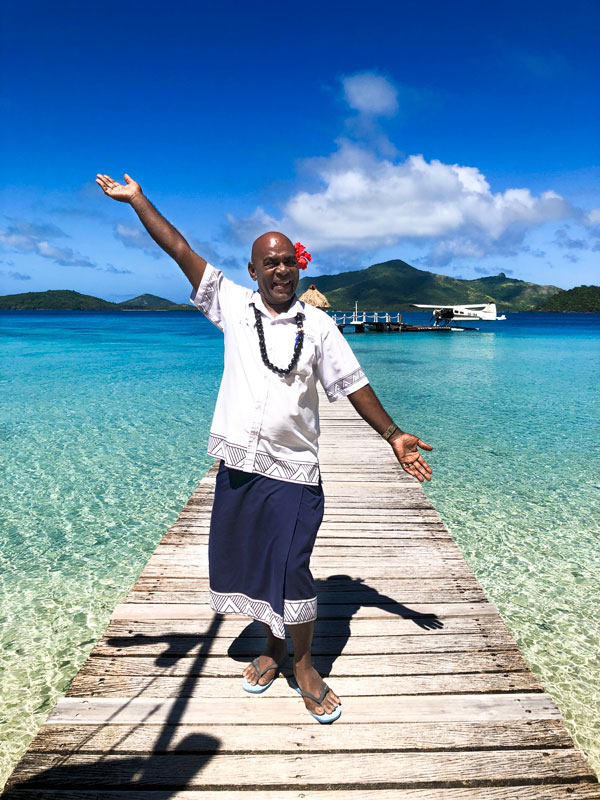
Guests are welcomed to paradise by guest experiences manager, Bill. (Image: Imogen Eveson)
“Everything happens here, under the baka tree,” says wood carver Illiesa Latu. He’s from the island of Fulaga, known for its wood carving. I’d first met Illiesa earlier that day on an island tour, when we’d stopped at the wood shed to see how objects around the resort are made using fallen wood: bed frames, driftwood waste bins, picture frames that are given to guests on departure complete with a photograph snapped during their stay. It speaks of the care, love and authenticity woven into everything on Turtle Island.
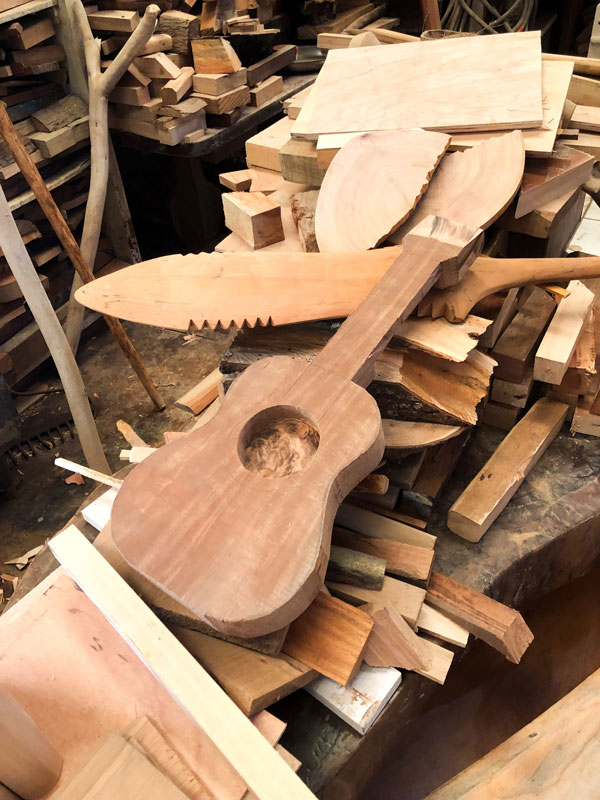
Turtle Island uses fallen wood to craft practical objects such as bed frames and bins.
Lifelong connection
Back on the mat, the guitar comes out, the team raising the roof with a few Fijian numbers before launching into John Denver’s Leaving on a Jet Plane. With customised lyrics. “We’re leaving on a seaplane, can’t wait till we come back again. Oh Turtle we hate to go.” This twist on a classic was first improvised by guests as their parting speech. And now the years have thatched this moment into a memory and the memory into folklore, passed down between guests and the Turtle family. Yes, there are private beaches and lobster picnics and Champagne on tap, but that’s not the reason people keep coming back to Turtle Island. It’s the lifelong connections that are created. “Not only is it beautiful, but the relationships you form with both staff and other guests is unlike any other place we’ve ever been,” reflects Rachel.
A week since we arrived on Turtle Island, it’s time to make our parting speech. We share our thoughts and memories over sunset cocktails and as part of the daily staff meeting, a ritual all guests partake in. As we leave on our own seaplane, it feels like the end of an era. We cross incoming guests in the Turtle Airways terminal in Nadi, ready to begin their own.
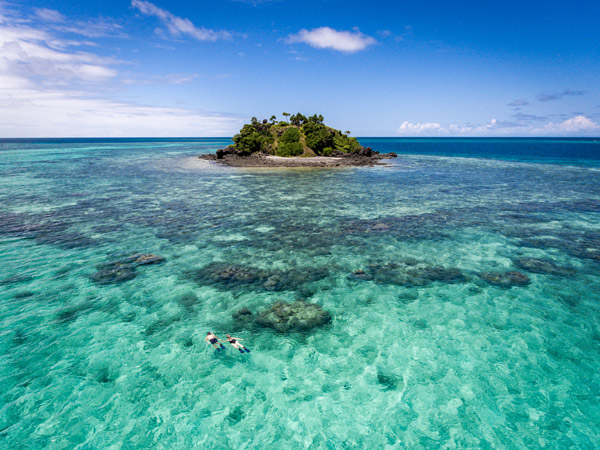
Days here are spent in and out of the aquamarine water. (Image: Laura Pittman)
A traveller’s checklist
Getting there
Fly direct to Nadi from Sydney, Brisbane and Melbourne. Transfers to Turtle Island are 30 minutes by private seaplane or two hours by private speed boat.
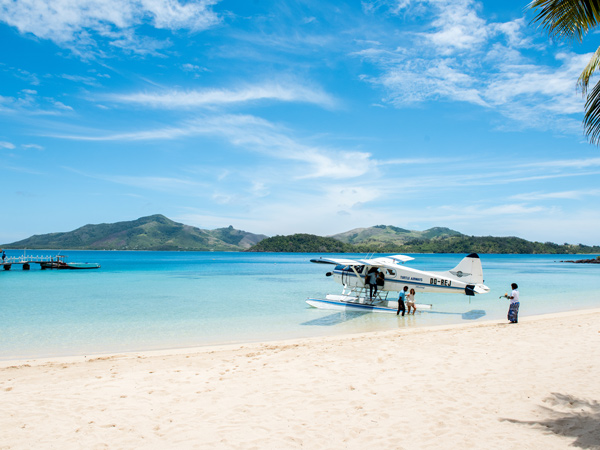
Arrive in style by seaplane.
Staying there
Turtle Island’s all-inclusive packages (accommodation, all food and beverages, all activities including two half- hour massages at Vonu Spa and access to private beaches) begin at around $3680 a night, with a minimum stay of five nights.
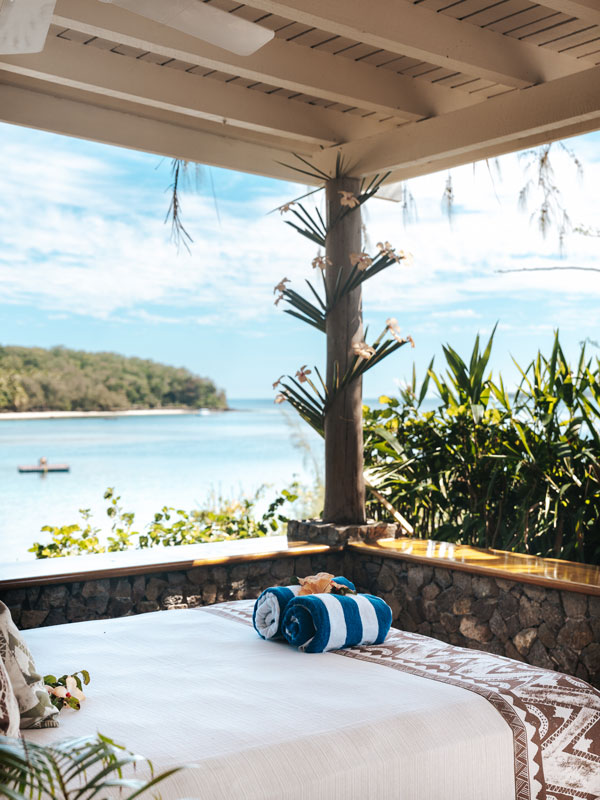
Relax on a day bed with a view from the island’s Vonu Point villa.
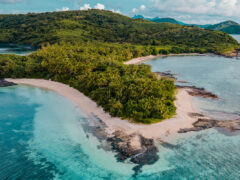
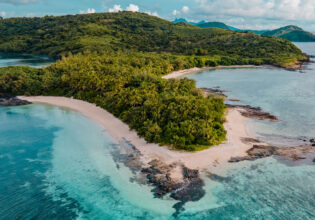
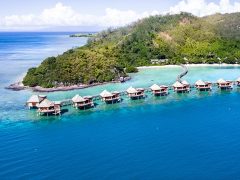
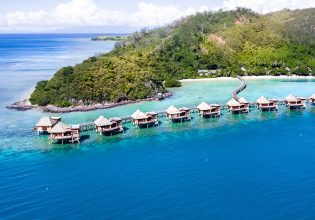
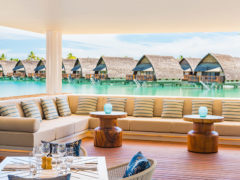
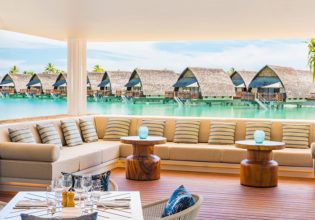
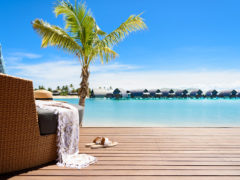
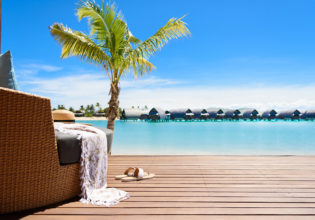

LEAVE YOUR COMMENT